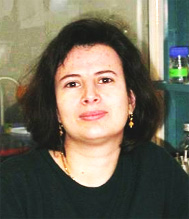
Reductases of Gram-positive Anaerobes
The lab of Kathrin Makdessi
|
|
contactprojectsmembers of the grouppublications |
|
1. Role of tungsten in the metabolism of Eubacterium acidaminophilum
Eubacterium acidaminophilum is a Gram-positive, anaerobic microorganism that degrades amino acids via Stickland reaction. From this organism three tungsten-containing enzymes have been isolated and characterized: formate dehydrogenase I, formate dehydrogenase II, and an aldehyde oxidoreductase. Tungsten is a rare element and only few microorganisms, mainly thermophiles and hyperthermophiles, use this metal-ion in their metabolism. E. acidaminophilum is exceptional being a mesophile. Recent studies revealed that E. acidaminophilum possesses a tungstate-specific uptake system, which belongs to the ABC-transporter family. The extracellular solute-binding protein (TupA) is tungstate specific and is able to discriminate between tungstate and molybdate. This finding raises the question about the molecular mechanism of the distinction. Furthermore, this bacterium contains a cytoplasmic molybdate/tungstate-binding protein (Mop), that belongs to the molbindin family proteins, which have been implicated in molybdenum storage and homeostasis. Our research is directed at the overall tungsten metabolism of this organism and includes:
2. D-proline reductase of Clostridium sticklandii D-proline reductase from Clostridium sticklandii catalyzes the reductive ring cleavage of D-proline to 5-aminovalerate. It contains a substrate activating pyruvoyl group and a catalytic active selenocysteine. The pyruvoyl group is formed after cleavage of a proprotein from a cysteine residue and thus these enzymes are distinct from other pyruvoyl-containing enzymes where the pyruvoyl group is formed from a serine residue. This project aims at the biochemical characterization of this enzyme in comparison to glycine reductase and the regulation of gene transcription.
|
|||||||||||||||||